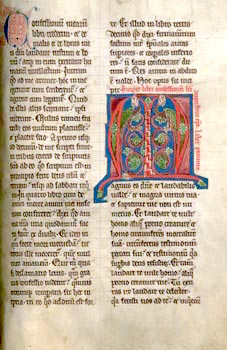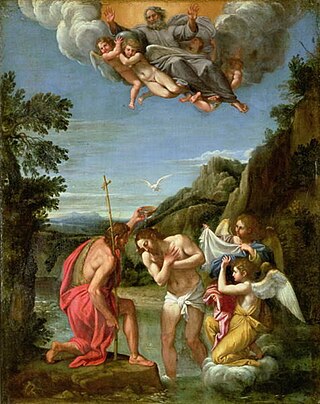
Adoptionism, also called dynamic monarchianism, is an early Christian nontrinitarian theological doctrine, subsequently revived in various forms, which holds that Jesus was adopted as the Son of God at his baptism, his resurrection, or his ascension. How common adoptionist views were among early Christians is debated, but it appears to have been most popular in the first, second, and third centuries. Some scholars see adoptionism as the belief of the earliest followers of Jesus, based on the epistles of Paul and other early literature. However, adoptionist views sharply declined in prominence in the fourth and fifth centuries, as Church leaders condemned it as a heresy.

In Christianity, Christology, translated from Greek as 'the study of Christ', is a branch of theology that concerns Jesus. Different denominations have different opinions on questions such as whether Jesus was human, divine, or both, and as a messiah what his role would be in the freeing of the Jewish people from foreign rulers or in the prophesied Kingdom of God, and in the salvation from what would otherwise be the consequences of sin.

The epiclesis refers to the invocation of one or several gods. In ancient Greek religion, the epiclesis was the epithet used as the surname given to a deity in religious contexts. The term was borrowed into the Christian tradition, where it designates the part of the Anaphora by which the priest invokes the Holy Spirit upon the Eucharistic bread and wine in some Christian churches. In most Eastern Christian traditions, the Epiclesis comes after the Anamnesis ; in the Western Rite it usually precedes. In the historic practice of the Western Christian Churches, the consecration is effected at the Words of Institution though during the rise of the Liturgical Movement, many denominations introduced an explicit epiclesis in their liturgies.

The phrase "What would Jesus do?", often abbreviated to WWJD, became popular particularly in the United States in the early 1900s after the widely read book In His Steps: What Would Jesus Do? by Charles Sheldon. The phrase had a resurgence in the 1990s as a personal motto for adherents of Christianity, who used it as a reminder of their belief in a moral imperative to act in a manner demonstrating the love of Jesus through their actions. The resurgence of the motto during the 1990s stems from the W.W.J.D. abbreviation on wristbands that became popular among Christian youth groups.
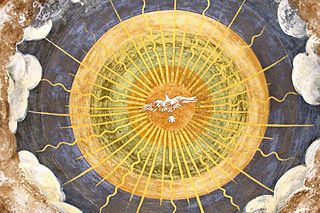
Pneumatology refers to a particular discipline within Christian theology that focuses on the study of the Holy Spirit. The term is derived from the Greek word Pneuma, which designates "breath" or "spirit" and metaphorically describes a non-material being or influence. The English term pneumatology comes from two Greek words: πνεῦμα and λόγος. Pneumatology includes study of the person of the Holy Spirit, and the works of the Holy Spirit. This latter category also includes Christian teachings on new birth, spiritual gifts (charismata), Spirit-baptism, sanctification, the inspiration of prophets, and the indwelling of the Holy Trinity. Different Christian denominations have different theological approaches on various pneumatological questions.

The Imitation of Christ, by Thomas à Kempis, is a Christian devotional book first composed in Medieval Latin as De Imitatione Christi. The devotional text is divided into four books of detailed spiritual instructions: (i) "Helpful Counsels of the Spiritual Life", (ii) "Directives for the Interior Life", (iii) "On Interior Consolation", and (iv) "On the Blessed Sacrament". The devotional approach of The Imitation of Christ emphasises the interior life and withdrawal from the mundanities of the world, as opposed to the active imitation of Christ practised by other friars. The devotions of the books emphasize devotion to the Eucharist as the key element of spiritual life.

In Christianity, Jesus is believed to be the Son of God or God in human form as written in the Bible's New Testament, and in most Christian denominations he is held to be God the Son, a person of the Trinity of God.

Christian mysticism is the tradition of mystical practices and mystical theology within Christianity which "concerns the preparation [of the person] for, the consciousness of, and the effect of [...] a direct and transformative presence of God" or Divine love. Until the sixth century the practice of what is now called mysticism was referred to by the term contemplatio, c.q. theoria, from contemplatio, "looking at", "gazing at", "being aware of" God or the Divine. Christianity took up the use of both the Greek (theoria) and Latin terminology to describe various forms of prayer and the process of coming to know God.

Two names and a variety of titles are used to refer to Jesus in the New Testament. In Christianity, the two names Jesus and Emmanuel that refer to Jesus in the New Testament have salvific attributes. After the crucifixion of Jesus the early Church did not simply repeat his messages, but focused on him, proclaimed him, and tried to understand and explain his message. One element of the process of understanding and proclaiming Jesus was the attribution of titles to him. Some of the titles that were gradually used in the early Church and then appeared in the New Testament were adopted from the Jewish context of the age, while others were selected to refer to, and underscore the message, mission and teachings of Jesus. In time, some of these titles gathered significant Christological significance.

Christian meditation is a form of prayer in which a structured attempt is made to become aware of and reflect upon the revelations of God. The word meditation comes from the Latin word meditārī, which has a range of meanings including to reflect on, to study, and to practice. Christian meditation is the process of deliberately focusing on specific thoughts and reflecting on their meaning in the context of the love of God.
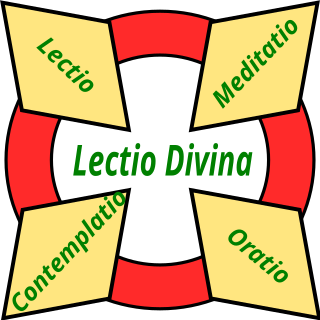
In Western Christianity, Lectio Divina is a traditional monastic practice of scriptural reading, meditation and prayer intended to promote communion with God and to increase the knowledge of God's word. In the view of one commentator, it does not treat Scripture as texts to be studied, but as the living word.

Christian literature is the literary aspect of Christian media, and it constitutes a huge body of extremely varied writing.
Theocentrism is the belief that God is the central aspect to existence, as opposed to anthropocentrism, existentialism and sentientism. In this view, meaning and value of actions done to people or the environment are attributed to God. The tenets of theocentrism, such as humility, respect, moderations, selflessness, and mindfulness, can lend themselves towards a form of environmentalism. In modern theology, theocentrism is often linked with stewardship and environmental ethics or Creation care. It is the belief that human beings should look after the world as guardians and therefore in the way God wants them to. Humans should be considerate to all, from animals to plants to humans themselves. It maintains that human beings are merely here for a short time and should be looking after the world for future generations.
Eastern Orthodox theology is the theology particular to the Eastern Orthodox Church. It is characterized by monotheistic Trinitarianism, belief in the Incarnation of the divine Logos or only-begotten Son of God, cataphatic theology with apophatic theology, a hermeneutic defined by a Sacred Tradition, a catholic ecclesiology, a theology of the person, and a principally recapitulative and therapeutic soteriology.
Mystical theology is the branch of theology in the Christian tradition that deals with divine encounter and the self-communication of God with the faithful; such as to explain mystical practices and states, as induced by contemplative practices such as contemplative prayer, called theoria from the Greek for contemplation.

In Christianity, God is believed to be the eternal, supreme being who created and preserves all things. Christians believe in a monotheistic conception of God, which is both transcendent and immanent. Christian teachings on the transcendence, immanence, and involvement of God in the world and his love for humanity exclude the belief that God is of the same substance as the created universe but accept that God the Son assumed hypostatically united human nature, thus becoming man in a unique event known as "the Incarnation".
Christian theology is the theology – the systematic study of the divine and religion – of Christianity and Christian belief and practice. It concentrates primarily upon the texts of the Old Testament and of the New Testament, as well as on Christian tradition. Christian theologians use biblical exegesis, rational analysis and argument. Theologians may undertake the study of Christian theology for a variety of reasons, such as in order to:
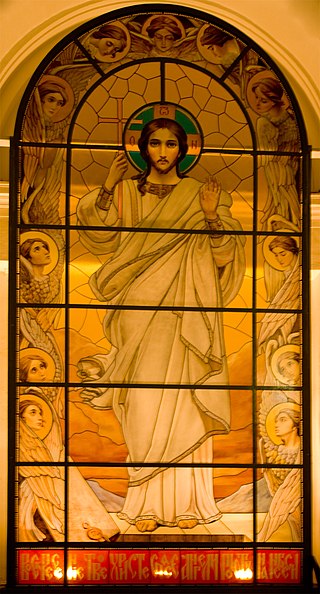
The knowledge of Christ refers to one of two possible, and at times related, topics in Christology: one addresses how Christians come to know Christ, the other focuses on the knowledge of Christ about the world. Discussions regarding the knowledge of Christ have had a central place in Christology for centuries. In the 20th century, the interplay between the two concepts was epitomized in the title of a book by Hans Urs von Balthasar: "Does Jesus Know Us? Do We Know Him?"
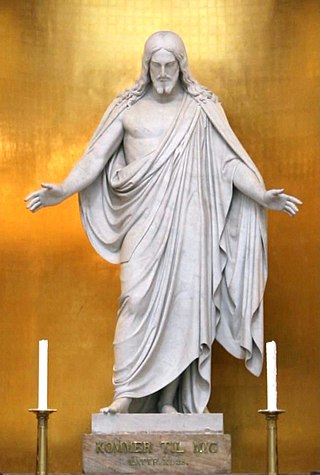
The love of Christ is a central element of Christian belief and theology. It refers to the love of Jesus Christ for humanity, the love of Christians for Christ, and the love of Christians for others. These aspects are distinct in Christian teachings—the love for Christ is a reflection of His love for all people.

Seeing with the Eyes of Love by Eknath Easwaran is a practical commentary on The Imitation of Christ, a Christian devotional classic of the early 15th century, believed to be the work of Thomas à Kempis. Easwaran's commentary emphasizes how to translate the Imitation into daily living with the aid of spiritual practices. Seeing with the Eyes of Love was originally published in the United States in 1991. A German translation was published in 1993, and a second U.S. edition was published in 1996. The book has been reviewed in newspapers, magazines, and websites.

